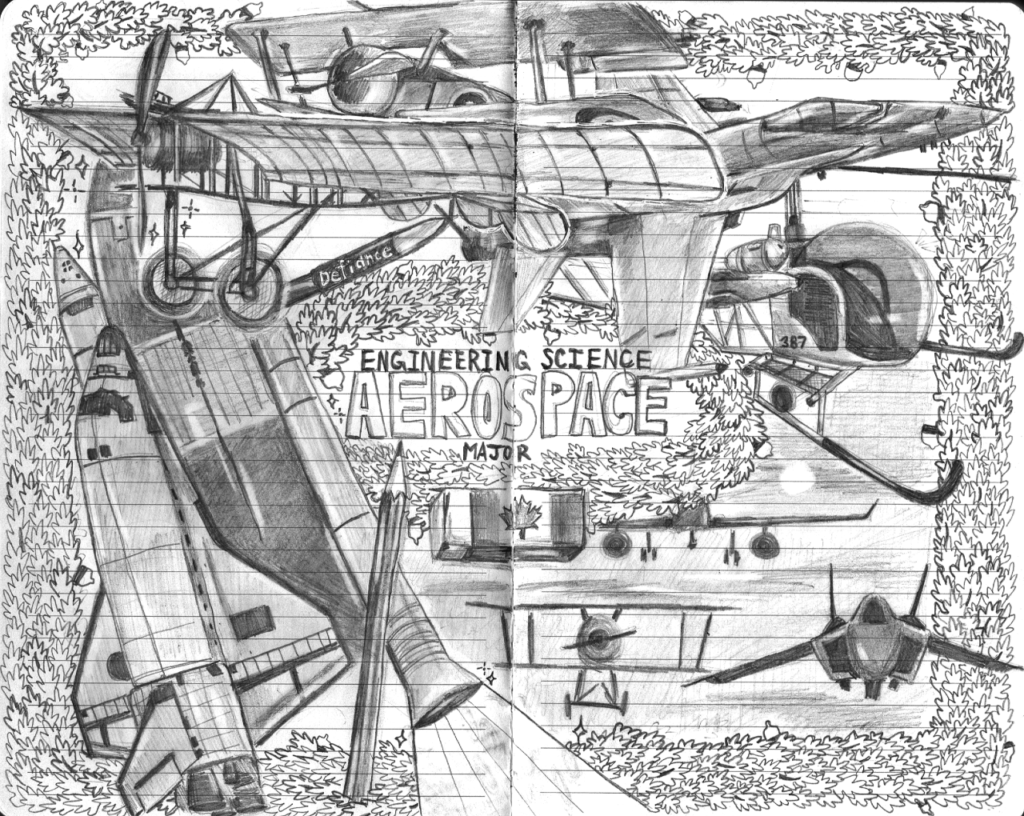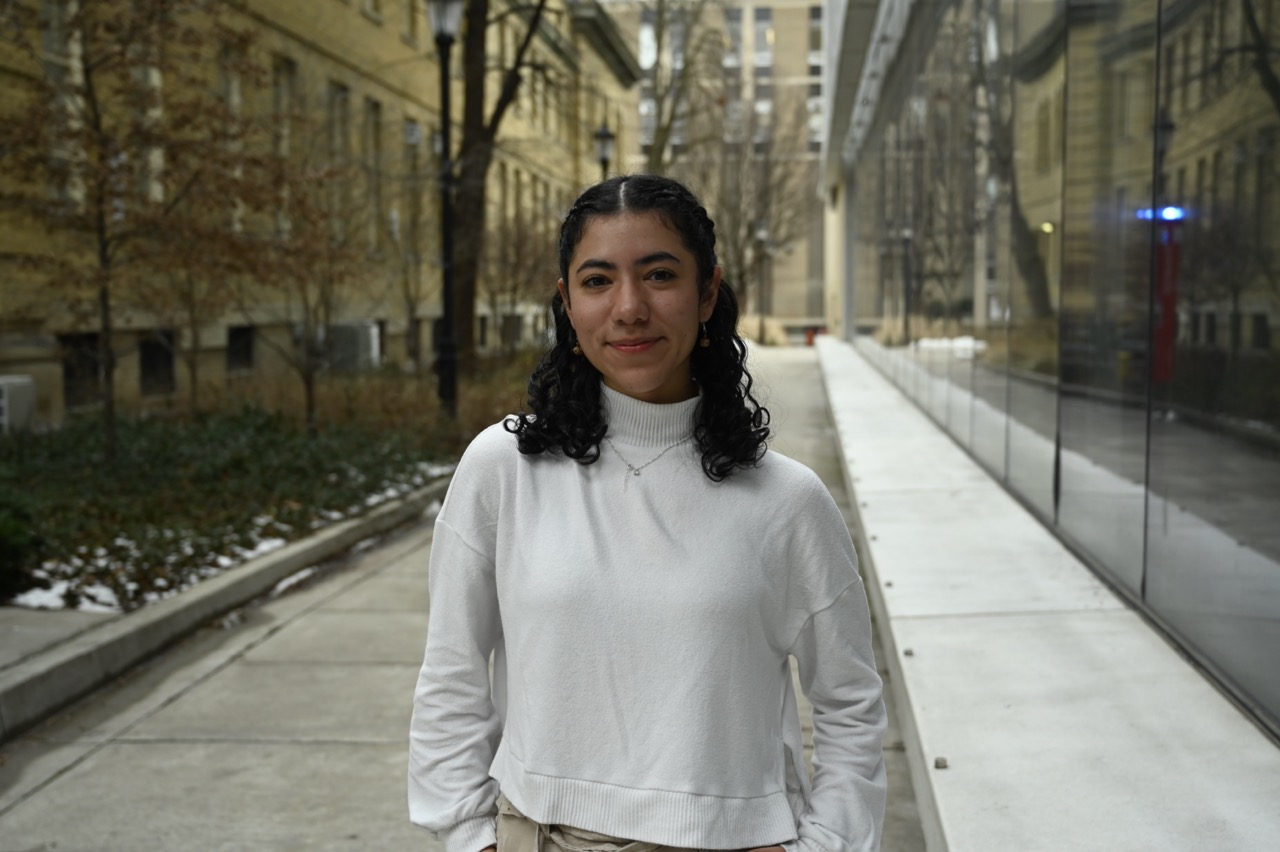Why was the aerospace engineer always calm during turbulence?
They knew how to stay grounded…
What is Aerospace Engineering?
Aerospace engineering involves the science, development, and testing of aircraft, spacecraft, missiles, satellites, rocket-propulsion systems, and robotic systems operating within or beyond earth’s atmosphere. In addition, aerospace engineers might work on cars, wind turbines, unmanned aerial vehicles, telescopes, and more.
Aerospace engineering requires knowledge of mechanical engineering, robotics, computer science and engineering, material science and civil engineering, energy systems, physics, and more. There is exciting work being done such as research in autonomous flight, superlight materials, experimental energy sources, and low-cost space travel. You will enter a technologically advanced and challenging field, where you’ll be responsible for advancing human exploration and transportation on earth and beyond.
The Aerospace Engineering major offers a comprehensive curriculum encompassing dynamics and aerodynamics, control systems, structures, propulsion, robotics, and aeroacoustics. It provides instruction on both aircraft and spacecraft design and flight, emphasizing fundamental science and engineering principles. Additionally, courses cover topics such as sustainable aviation, environmental considerations, and space exploration, and you have a wide range of technical electives with which you can focus your degree.

Why Choose Aerospace Engineering?
Why Choose This Major?
You’re interested in:
- Research areas such as computational and experimental fluid dynamics, with applications ranging from spacecraft to race cars.
- The science behind propulsion, combustion and fusion energy.
- Aircraft and spacecraft flight systems and controls.
- Developing autonomous terrestrial and space robotic systems that can function for extended periods in demanding conditions.
- Planes, rockets, drones, satellites, and so much more!
In the EngSci Aerospace Engineering major, many of your professors will be from the University of Toronto Institute for Aerospace Studies (UTIAS). UTIAS is devoted to aerospace graduate studies and has a long history of innovation and aerospace research with top industry and institutional partners.
Where Can This Major Take You?
EngSci Aerospace Engineering graduates have pursued graduate studies at top institutes and universities such as:
- UTIAS
- Caltech
- Cambridge University
- ETH Zurich
- MIT
- Stanford University
- University of Michigan
Sample employers for recent Aerospace graduates include:
- Space Agencies such as NASA and CSA
- Bombardier
- MDA Space Missions
- Honeywell
- Pratt & Whitney Canada
- Safran Landing Systems
EngSci Aerospace graduates have also started companies such as Kepler Communications, Aerovelo, and 2XL Games.
Upper-Year Insights

EngSci 2T5 + PEY (Aerospace), Aerodynamics Lead @ UTAT Rocketry
“Getting involved in the aerospace field has been one of the biggest challenges in my career and the steepest learning curve I’ve experienced. After lots of constant effort, choosing this major and being exposed to the industry, I look back and I see how much I’ve grown since I got to my first day of university. Acknowledging every little effort you put into your career and seeing it bloom day by day toward your dreams has been my most memorable experience!”
“Make sure you really enjoy aviation and/or space! Being passionate about aerospace has definitely made my journey through EngSci Aero the most exciting and challenging experience. This being said, finding yourself a group of friends who share your interests is also important. Don’t be afraid of making connections, develop your social skills and make lots of long-lasting relationships with everyone around you.”
Courses in Year 1 and Year 2 That Relate to Aerospace Engineering
Almost everything you learn in the foundation years can relate to the Aerospace Engineering major. For example, as an aerospace engineer, you might design firmware systems for drones or satellites, in which case courses such as ECE159 (Fundamentals of Electric Circuits), ESC190 (Computer Algorithms and Data Structures), and ECE253 (Digital and Computer Systems) will be extremely important. If you’re interested in aerodynamics, then PHY180 (Classical Mechanics) and AER210 (Vector Calculus and Fluid Mechanics) would be especially useful. Below are just a few examples of relevant courses and their applications to Aerospace Engineering.
Year 1
CIV102 will teach you concepts in structural engineering relating to the design and material selection of strong structures, which directly relate to aerospace engineering. For example, loading a bridge is like keeping a plane wing straight, and vibrations in buildings are similar to airplane turbulence.
PHY180 covers kinematics, dynamics, and other concepts to provide you with a strong foundation in physics.
ESC103 will introduce you to linear algebra — which is an essential branch of mathematics for aerospace engineering as it relates to structures, electronics, and more. It will also introduce the MATLAB programming language, to automate your mathematical computations. MAT185 is a pure linear algebra course which will strengthen your skills from ESC103 and introduce more advanced topics.
Year 2
CHE260 is split into two halves: thermodynamics and heat transfer. In aerospace, a knowledge of thermodynamics is crucial when building engines and dealing with gases. During the heat transfer portion, you’ll learn about how heat moves through materials; a common problem in aircraft design is keeping your materials hot or cold enough when moving through the atmosphere at high speeds. If you’re interested in Aero, pay attention in CHE260.
AER210 is another two-part course. The first half focuses on vector calculus, which involves differentiation and integration in vector fields in 3D space. You’ll use this in the fluid mechanics half of the course, which introduces ways to analyze and predict the motion of fluids in different situations. The principles from fluid mechanics are invaluable for anything to do with aerodynamics, speed, and flight.
MAT292 gives you a solid foundation in modeling different physical systems mathematically with ordinary differential equations (ODEs). For example, heat-related systems in plane engines can be modeled with ODEs.
Interesting Courses in This Major
AER302: Aircraft Flight
This course discusses everything about aircraft flight. Topics include the atmosphere, equations of motion, airspeed measurement, drag, thrust and power, climb, turns, pull-up, takeoff, landing, flight envelope, static stability and control, and dynamic stability.
AER407: Space Systems Design
This course teaches real-world space system design with a hands-on approach, led by engineers from MDA and Microsat Systems Canada. Students work in teams on different aspects like operations, systems, mechanical, electrical, control, and science. The course will include lectures, workshops, and assessments like the Preliminary Design Review and Final Report.
AER515: Combustion Processes
This course takes CHE260 to the next level and goes in-depth into the thermodynamics, chemistry, kinetics, and calculations of combustion. Combustion will also be discussed with respect to rockets, reciprocating engines, gas turbines, furnaces, and the environment.
AER525: Robotics
This course is about analytical robotics and the design and control of industrial robots and their instrumentation. Topics include forward, inverse, and differential kinematics, inverse and forward dynamics, screw representation, statics, motion and force control of robot manipulators, actuation schemes, task-based and workspace design, mobile manipulation, and sensors and instrumentation in robotic systems. Experiments will be held in the Robotics Laboratory.
See the full course listing for each EngSci major in the academic calendar.
Where to Get Some Experience Before Deciding?
University of Toronto Aerospace Team (UTAT)
UTAT is an award-winning design team of undergraduate and graduate students working on aerospace-related design projects. UTAT has several divisions that you can join, with Rocketry, Aerial Robotics, UAV (Unmanned Aerial Vehicle), Space Systems, Outreach, and Aerospace Policy. Each division consists of subteams including mechanical, electrical, software, propulsion, control, and much more. There are many ways to get involved with UTAT, so consider joining their team!

Robotics for Space Exploration (RSX)
RSX designs, builds, and tests robots for planetary exploration. They compete in space engineering competitions around the world, notably the International University Rover Challenge (URC) in Utah and the CanSat competition in Texas. Furthermore, they host SEEK (Space Exploration and Engineering Kompetition), which is an annual competition organized by RSX where students gain practical experience with space technologies.

UTFR is an award-winning team that designs and builds an electric formula race car and competes in various Formula Racing competitions around the world. Their subteams develop the electrical, autonomous, and mechanical aspects of the race car; prospective Aerospace Engineering students might want to consider joining the aerodynamics subteam, which is dedicated to making the car go fast. If you’re interested, keep an eye out for their recruiting cycle.

Visit the Skule Clubs and Design Teams pages to find more extracurriculars.
Check out the EngSci majors website here for more info:
